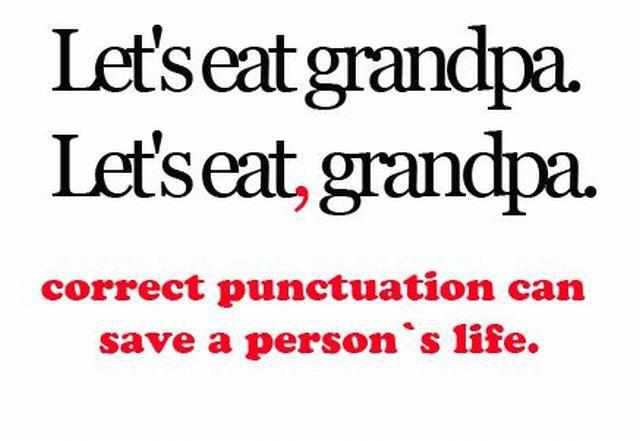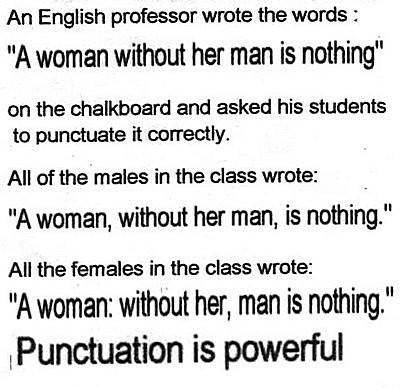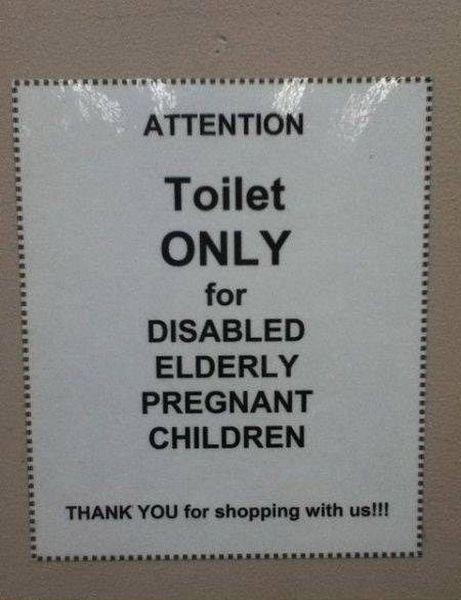Here we are at my inaugural grumpy post about grammar. By request, and because the misuse of them is my biggest pet peeve, today’s post features commas.

Google “comma memes” and you’ll find dozens of them, most happily bashing people who can’t seem to figure out how to use them. For this post I’ve gathered a few that pop up on Facebook and other websites.
When I was in junior high school, so long ago that it wasn’t yet called middle school, my English teacher taught a unit on grammar. It was an excruciatingly boring class, and I usually focused more on her gravity-defying helmet of hair than on the lesson. Her lessons did somehow make their way into my brain, however, and although I do still sometimes make grammar mistakes, she gave me a wonderful background that serves me well to this day.
 Commas are used to separate the elements of a sentence into manageable parts. The basic rules, which I have shameslessly borrowed from Purdue University’s Online Writing Lab (go visit–it’s a fabulous site!), are as follows:
Commas are used to separate the elements of a sentence into manageable parts. The basic rules, which I have shameslessly borrowed from Purdue University’s Online Writing Lab (go visit–it’s a fabulous site!), are as follows:
1. Use commas to separate independent clauses when they are joined by any of these seven coordinating conjunctions: and, but, for, or, nor, so, yet.
She wanted to cry, but she was too cold.

2. Use commas after introductory a) clauses, b) phrases, or c) words that come before the main clause.
While you were sleeping, I made breakfast.
Well, I told you not to eat that!
Taking a deep breath, she carried the tureen into the dining room.
3. Use a pair of commas in the middle of a sentence to set off clauses, phrases, and words that are not essential to the meaning of the sentence. Use one comma before to indicate the beginning of the pause and one at the end to indicate the end of the pause. (To help you decide whether an element is essential, ask yourself: (1) If you leave out the clause, phrase, or word, does the sentence still make sense? (2) Does the clause, phrase, or word interrupt the flow of words in the original sentence? (3) If you move the element to a different position in the sentence, does the sentence still make sense? If you answer “yes” to one or more of these questions, then the element is nonessential and should be set off with commas.)

She had even believed, for a while, that a child would change her husband.
All too soon the food was gone, however, and they got to work.
It had been a mild summer, if unusually wet, Bess had said, and the garden was producing very well.
If you answer no, the element is essential.
4. Do not use commas to set off essential elements of the sentence, such as clauses beginning with that (relative clauses).
Theodora began to despair that she would ever find Longley Hall.

5. Use commas to separate three or more words, phrases, or clauses written in a series. (It is here that you find the much maligned Oxford comma–the one after ‘butter’ below–but that should probably be the subject of another post.)
The three of them enjoyed a breakfast of bread, butter, and jam.
6. Use commas to separate two or more coordinate adjectives that describe the same noun. Never add an extra comma between the final adjective and the noun itself or use commas with non-coordinate adjectives. (Coordinate adjectives are adjectives with equal status in describing the noun; neither adjective is subordinate to the other. Ask yourself: (1) Does the sentence make sense if the adjectives are written in reverse order? (2) Does the sentence make sense if the adjectives are written with and between them? If yes, then the adjectives are coordinate and should be separated by a comma.)
He was a long, tall drink of water.
She wore a faded blue dress.
7. Use a comma near the end of a sentence to separate contrasted coordinate elements or to indicate a distinct pause or shift.
She seemed tired, even exhausted.
You aren’t finished already, are you?
8. Use commas to set off phrases at the end of the sentence that refer back to the beginning or middle of the sentence. Such phrases are free modifiers that can be placed anywhere in the sentence without causing confusion.
She ran down the street, sobbing hysterically.
Sobbing hysterically, she ran down the street.
9. Use commas to set off all geographical names, items in dates (except the month and day), addresses (except the street number and name), and titles in names.
I have lived in Durham, England.
Where were you on September 11, 2001?
10. Use a comma to shift between the main discourse and a quotation.
“Jonathan,” Lady Julia said haughtily, “this is none of your concern.”
 11. Use commas wherever necessary to prevent possible confusion. Be careful with this rule, though, because using commas in the wrong place causes more confusion than not using them.
11. Use commas wherever necessary to prevent possible confusion. Be careful with this rule, though, because using commas in the wrong place causes more confusion than not using them.
You can find more examples of correct and incorrect comma usage on these sites:
Purdue OWL
GrammarBook
The UNC Writing Center
Grammar Monster

And, finally, there is the fabulous book, Eats, Shoots & Leaves, which makes learning to use commas properly ever so much more fun than my English teacher did.
